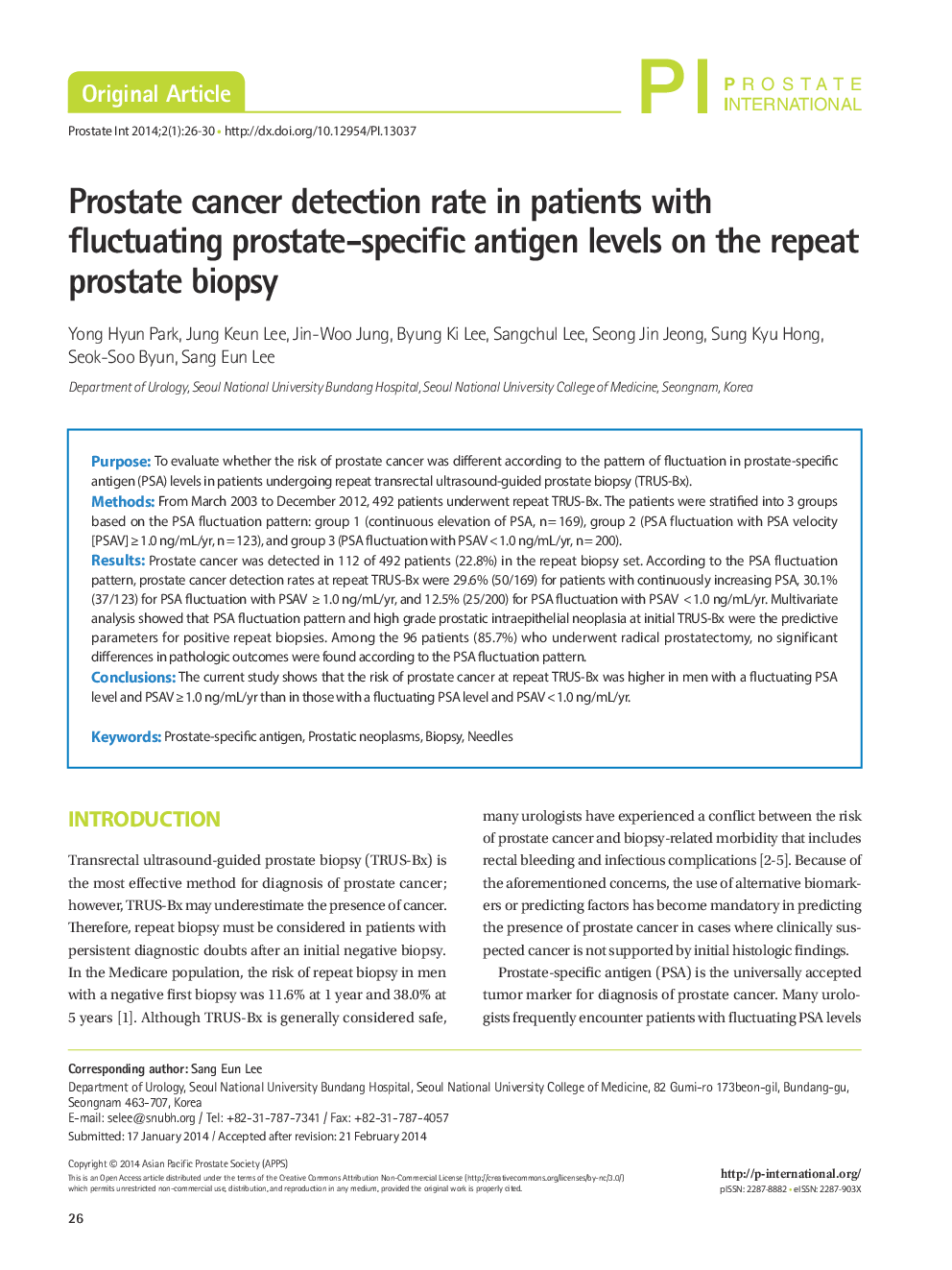| Article ID | Journal | Published Year | Pages | File Type |
|---|---|---|---|---|
| 4274182 | Prostate International | 2014 | 5 Pages |
PurposeTo evaluate whether the risk of prostate cancer was different according to the pattern of fluctuation in prostate-specific antigen (PSA) levels in patients undergoing repeat transrectal ultrasound-guided prostate biopsy (TRUS-Bx).MethodsFrom March 2003 to December 2012, 492 patients underwent repeat TRUS-Bx. The patients were stratified into 3 groups based on the PSA fluctuation pattern: group 1 (continuous elevation of PSA, n=169), group 2 (PSA fluctuation with PSA velocity [PSAV]=1.0 ng/mL/yr, n=123), and group 3 (PSA fluctuation with PSAV<1.0 ng/mL/yr, n=200).ResultsProstate cancer was detected in 112 of 492 patients (22.8%) in the repeat biopsy set. According to the PSA fluctuation pattern, prostate cancer detection rates at repeat TRUS-Bx were 29.6% (50/169) for patients with continuously increasing PSA, 30.1% (37/123) for PSA fluctuation with PSAV ≥1.0 ng/mL/yr, and 12.5% (25/200) for PSA fluctuation with PSAV <1.0 ng/mL/yr. Multivariate analysis showed that PSA fluctuation pattern and high grade prostatic intraepithelial neoplasia at initial TRUS-Bx were the predictive parameters for positive repeat biopsies. Among the 96 patients (85.7%) who underwent radical prostatectomy, no significant differences in pathologic outcomes were found according to the PSA fluctuation pattern.ConclusionsThe current study shows that the risk of prostate cancer at repeat TRUS-Bx was higher in men with a fluctuating PSA level and PSAV=1.0 ng/mL/yr than in those with a fluctuating PSA level and PSAV<1.0 ng/mL/yr.
